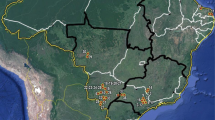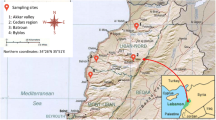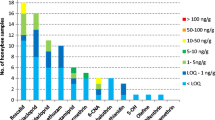Abstract
Samples of honeybees (Apis mellifera, n = 92) from 14 beehive monitoring stations located in 3 townships in the province of Bologna were analyzed from April to October 2000. The concentration of 32 organophosphorus pesticides and 5 carbamates was determined through liquid–liquid extraction followed by gas chromatography with a nitrogen–phosphorus detector and liquid chromatography coupled to mass spectrometry using atmospheric pressure chemical ionization in positive and negative ion modes. The most contaminated samples were from Granarolo Emilia where cereals (wheat, sorghum, and corn), sugar beets, and potatoes are the main agriculture products. Thirty-five pesticides were detected, with organophosphorus being the most abundant ones. Malathion was detected in 58% of the samples (mean level 0.360 mg/kg) followed by fenithrothion in 53% of the samples (mean level 0.544 mg/kg) and pirimiphos methyl in 48% of the samples (mean level 0.006 mg/kg). Temporal trends showed that the maximum detection frequency occurred in late spring and was associated with the use of treatment products and less rainfall. The obtained results demonstrated the feasibility of using honeybees for assessing pesticide exposure in agriculture settings.
Similar content being viewed by others
Author information
Authors and Affiliations
Rights and permissions
About this article
Cite this article
Ghini, ., Fernández, ., Picó, . et al. Occurrence and Distribution of Pesticides in the Province of Bologna, Italy, Using Honeybees as Bioindicators. Arch Environ Contam Toxicol 47, 479–488 (2004). https://doi.org/10.1007/s00244-003-3219-y
Issue Date:
DOI: https://doi.org/10.1007/s00244-003-3219-y




